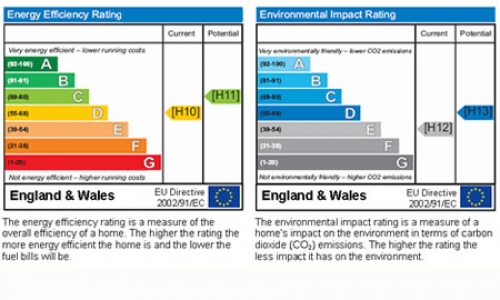We at isoenergy realise that manufacturers’ data sheets are often based on ideal figures so the efficiency projections are often inaccurate. The only way to really tell how efficiently a system runs is to install it and measure the efficiency. This is exactly what isoenergy has been doing for the past ten years.
The dataset of our existing sites includes a wide range of different types of property, including all grades of Listed Buildings. It tells us exactly how much energy the system has used versus how much the system has generated. This ratio is called the Seasonal Performance Factor (SPF). This differs from the standard co-efficient of performance (COP) as it is based on whole year, not just the summer season when the heat pump is at its most efficient.
Here are some examples of what you should expect from a ground source heat pump.
Expected Running Cost Examples:
|
Example System Size |
Alternative Oil Running Cost |
GSHP Running Cost |
Fuel Saving |
|
14kW New-Build |
£ 1,500.00 |
£ 850.00 |
£ 650.00 |
|
14kW Period Building |
£ 1,980.00 |
£ 1,122.00 |
£ 858.00 |
|
30kW New-Build |
£ 3,240.00 |
£ 1,836.00 |
£ 1,404.00 |
|
30kW Period Building |
£ 4,320.00 |
£ 2,448.00 |
£ 1,872.00 |
|
Example System Size |
Alternative Electricity Running Cost |
GSHP Running Cost |
Fuel Saving |
|
14kW New-Build |
£ 3,000.00 |
£ 850.00 |
£ 2,150.00 |
|
14kW Period Building |
£ 3,960.00 |
£ 1,122.00 |
£ 2,838.00 |
|
30kW New-Build |
£ 6,480.00 |
£ 1,836.00 |
£ 4,644.00 |
|
30kW Period Building |
£ 8,640.00 |
£ 2,448.00 |
£ 6,192.00 |
This is easily illustrated through a recent project we undertook to re-install a system that had been installed by a company that has now ceased trading.
The owners of the house contacted isoenergy as they were disappointed with their system as it was costing well above what was projected when they first installed the system. Eventually the system stopped working alltogether so they called on isoenergy to try and repair it. Inspection soon revealed that the collector array was undersized and the temperature of the ground had been reduced to –9°C, the very limit of most heat pumps working parameters. The end result was a heat pump system that was unable to get any heat out of the ground therefore they were heating their house and generating hot water with the inbuilt immersion heater.
It is widely accepted amongst renewable energy installers that the heat transfer fluid in the collector array should not drop below +3°C. At isoenergy we ensure our systems’ brine temperature does not drop below the +3°C limit by designing our systems to include more collector pipe in the ground, spreading the load. As a result, our systems often have a return temperature of +5°C. This additional design work and larger collector array ensures that our heat pump systems operate as efficiently as possible. Because of this we would expect our ground source heat pump systems to operate with an SPF of about 4.1:1 for a highly insulated new-build house and 3.6:1 in a poorly-insulated period property. So for every kWh of electricity that goes in either 4.1 kWh or 3.6 kWh of heat is produced.
The property mentioned above was costing about £ 4,600 a year in electricity. However, redesigning the system and adding the correct amount of collector array, saved the client about £ 3,400 a year in running costs. So now the system, with the same heat pump, has been transformed from an SPF of 1:1 to an SPF of around 3.6:1. When it comes to heat pumps, efficiency is everything.
